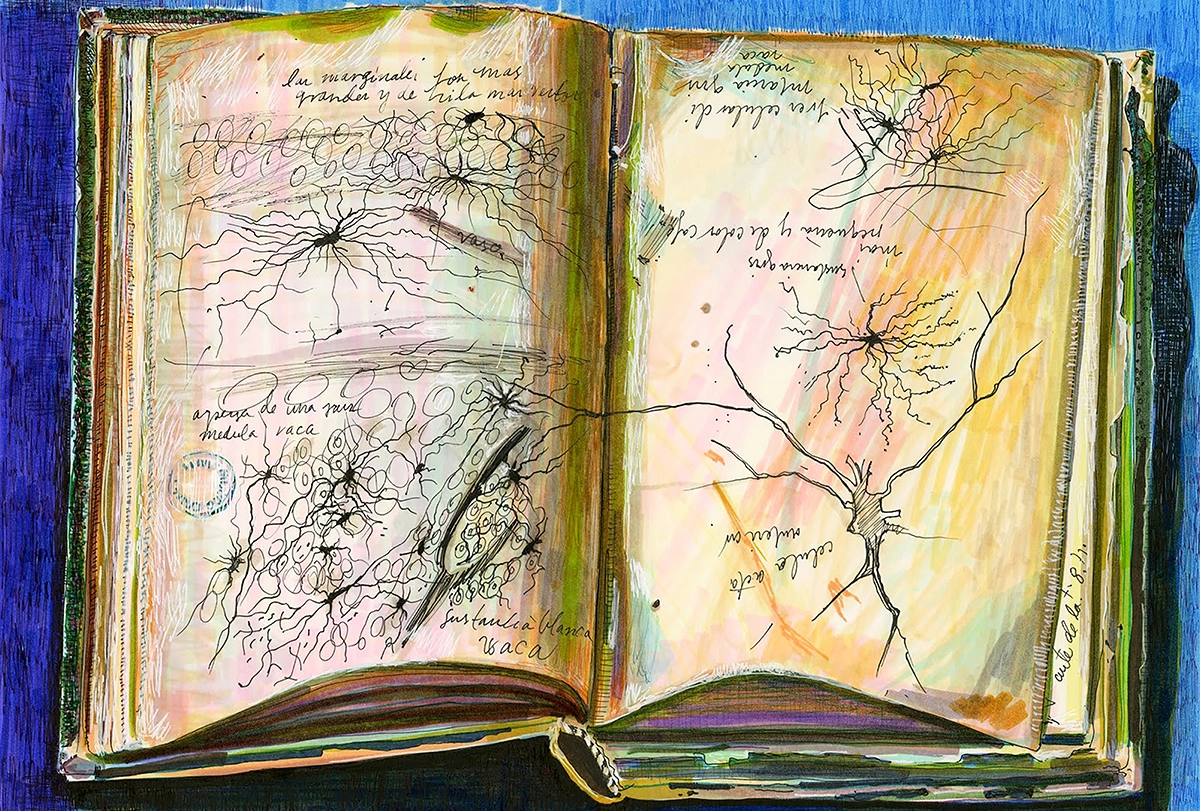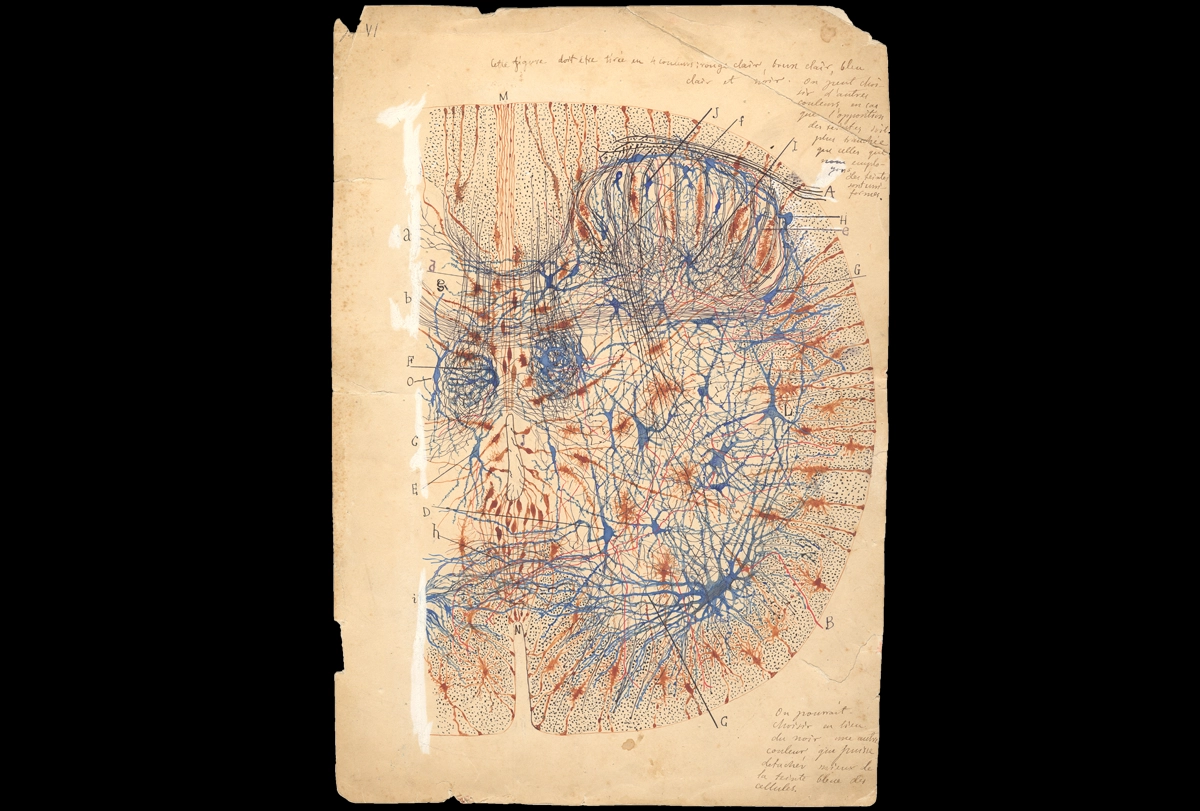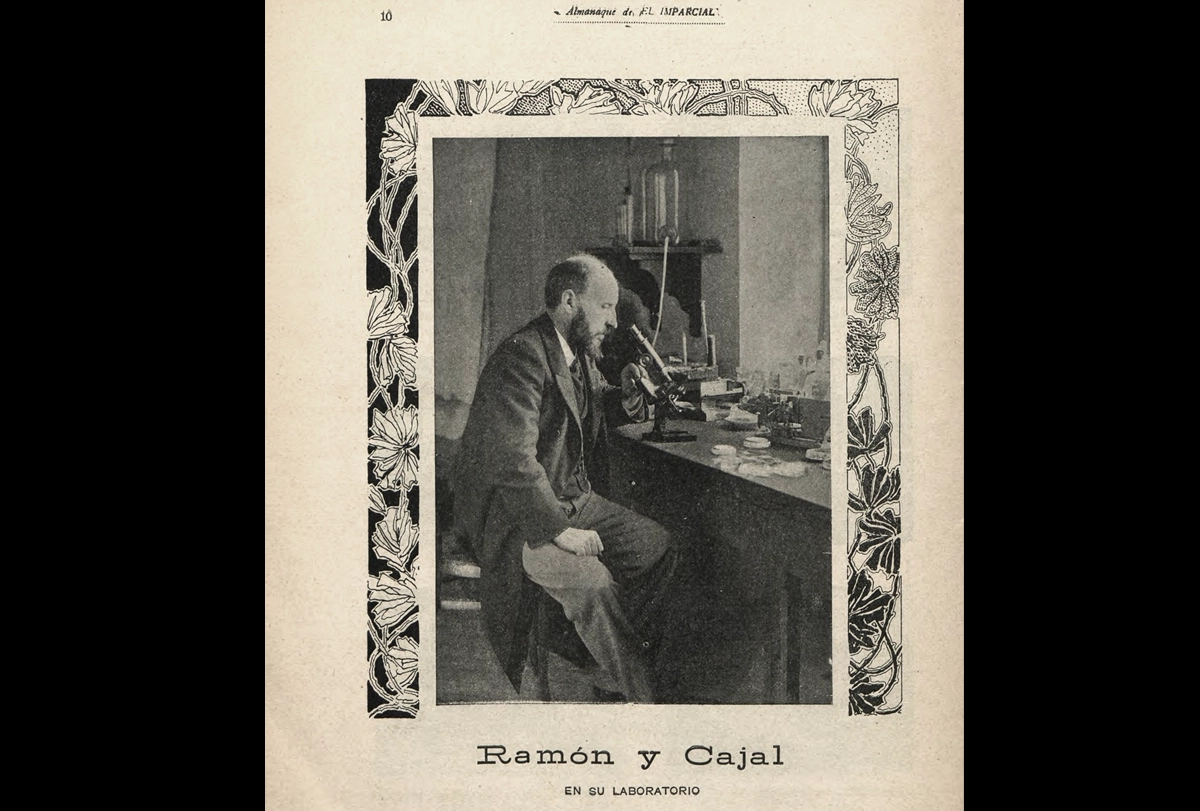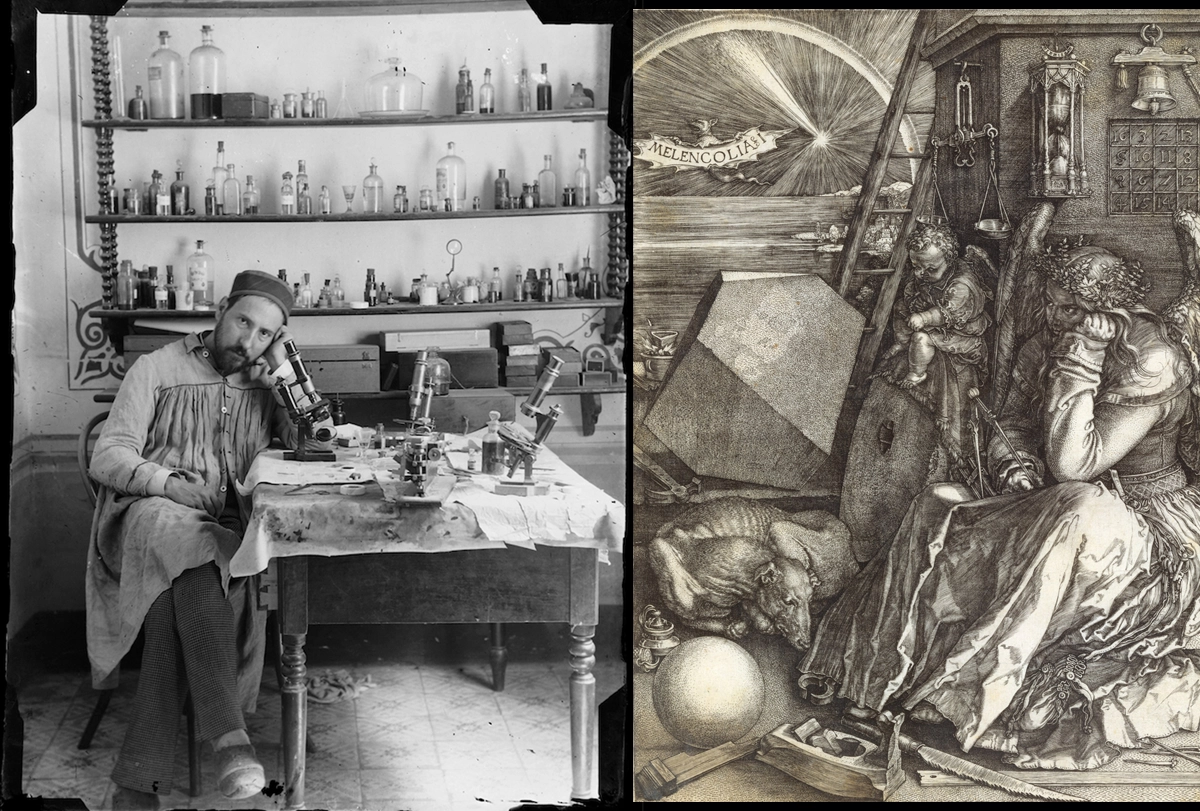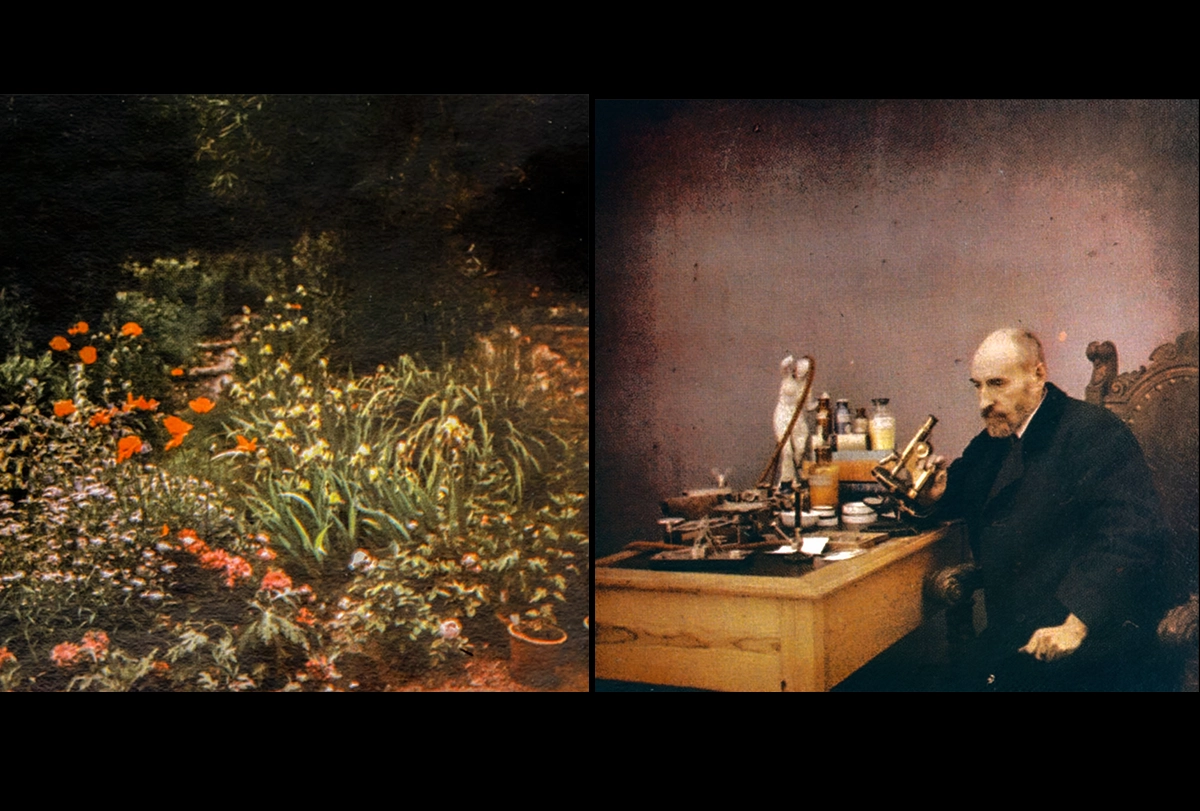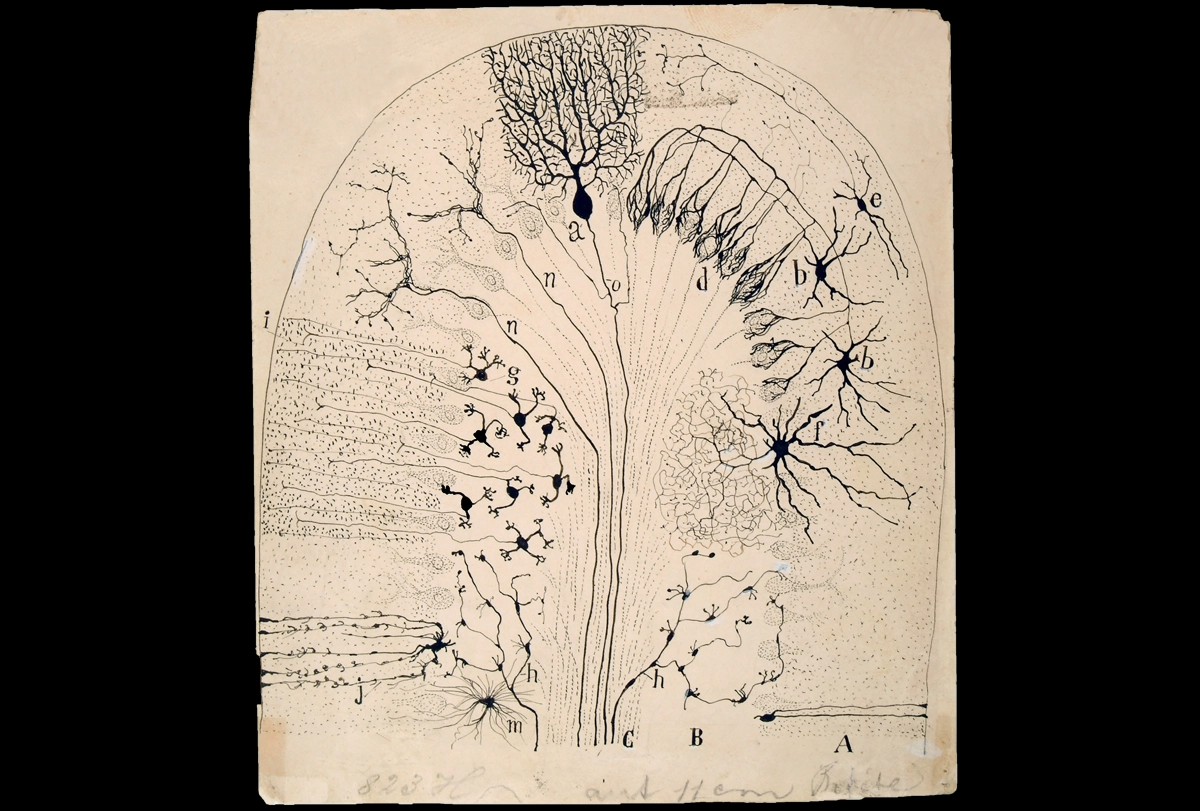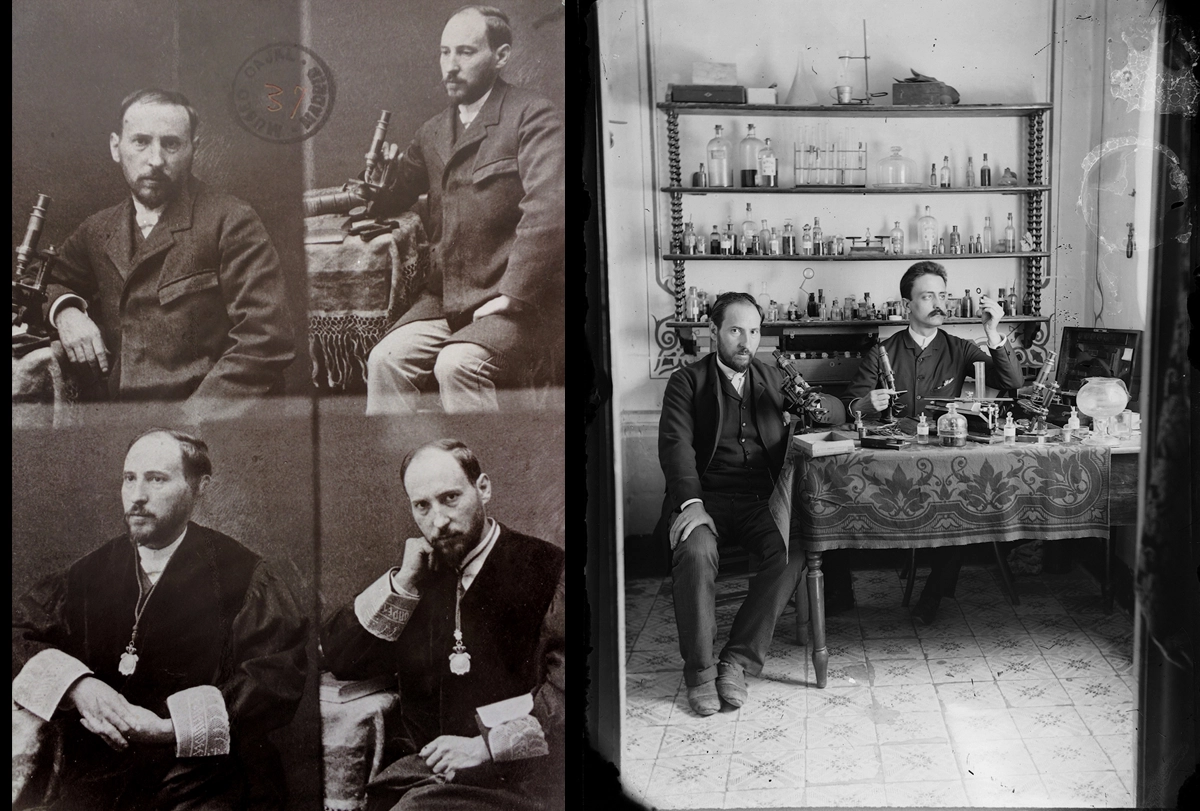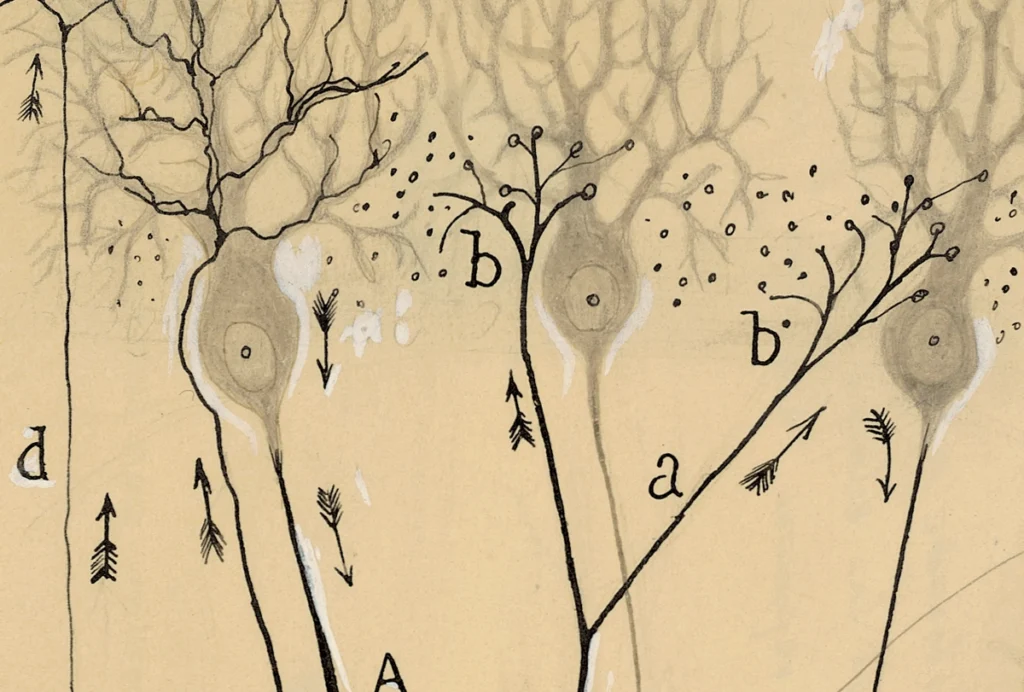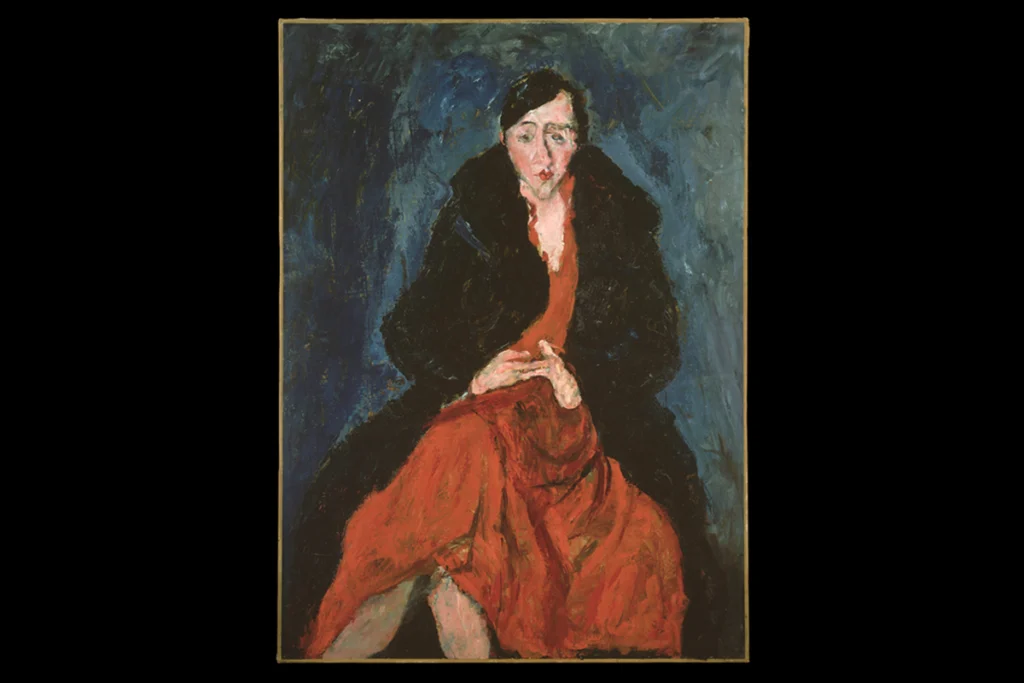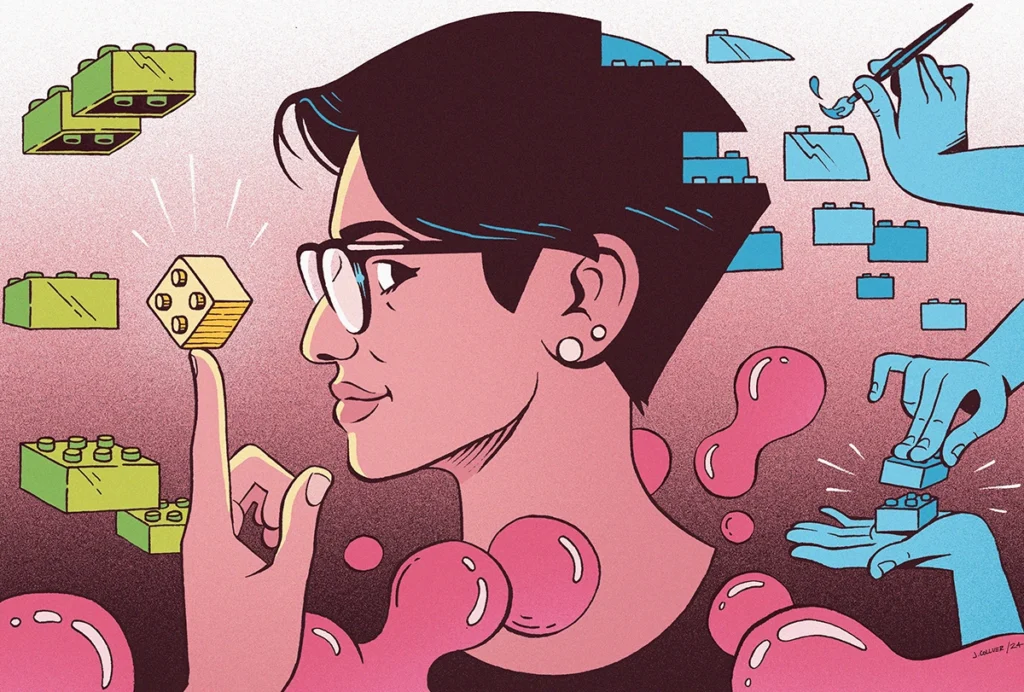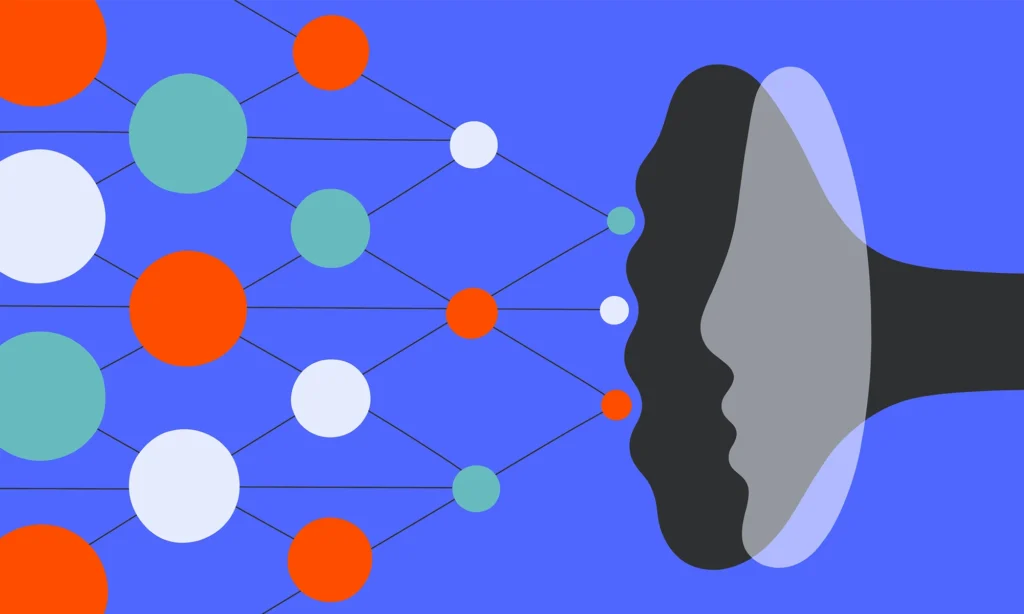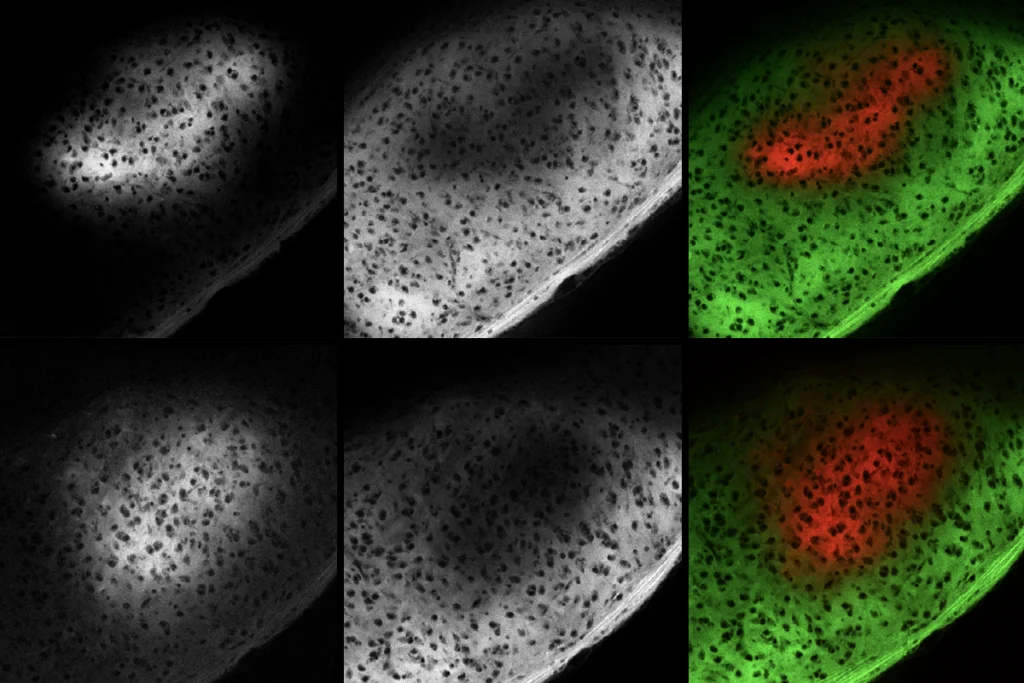The drawings and photographs of Santiago Ramón y Cajal are familiar to any neuroscientist—and probably anyone even remotely interested in the field. Most people who take a cursory look at his iconic images might assume that he created them using only direct observation.
But that’s not the case, according to a paper published in March 2024 by Dawn Hunter, visual artist and associate professor of art at the University of South Carolina, and her colleagues. For instance, the Golgi-stained tissue Ramón y Cajal drew contained neurons that were cut in half—so he painstakingly reconstructed the cells by drawing from elements in multiple slides. And he also fleshed out his illustrations using educated guesses and classical drawing principles, such as contrast and occlusion.
In this way, Ramón y Cajal’s art training was essential to his research, Hunter says. She came across Ramón y Cajal’s drawings while creating illustrations for a neuroscience textbook. “The first time I saw his work in person, out of pure inspiration, I decided to draw it,” she says. “It was in those moments of drawing that I realized his process was more profound and conceptually layered than merely retracing pencil lines with ink. Examining Ramón y Cajal’s work through the act of drawing is a more active experience than viewing his work as a gallery visitor or in a textbook.”
In 2015, Hunter installed her drawings and paintings alongside original Ramón y Cajal works in an ongoing exhibition at the U.S. National Institutes of Health (NIH). That effort led to a Fulbright fellowship to Spain in 2017, providing her access to the Legado Cajal archives at the Instituto Cajal National Archives, which contain thousands of Ramón y Cajal artifacts.
Hunter spoke to The Transmitter about her research in Spain and her realizations about how Ramón y Cajal worked as an artist and as a scientist.
This interview has been lightly edited for clarity.
The Transmitter: What do you think your work contributes that is new?
Dawn Hunter: It spells out the connection to [Ramón y Cajal’s] art training. There are some things that to me as a painter are obvious to zero in on that nobody’s really talked about. For example, Ramón y Cajal’s copying of the Renaissance painter Rafael’s entire portfolio. That in itself is a profound thing.
During Ramón y Cajal’s time, the microscope was new, and a lot of scientists didn’t take it seriously, but Ramón y Cajal did. I think there’s a reluctance to explore him in this context. There has been some resistance to talking about how his drawings were made—that resistance comes from a very concrete way of thinking about how a drawing or a scientific discovery could be made. But Ramón y Cajal went about his work almost like figure drawing—working in similar ways to Renaissance artists. And that’s how he created a fundamental understanding of the anatomy of the body.
Ramón y Cajal’s use of self-portraits was integral to communication about his research in the scientific community and public. His photographs were rich in allegorical metaphors populating Renaissance paintings and imagery found in 19th century Spanish newspapers that popularized [German painter] Albrecht Dürer. Ramón y Cajal’s art educational legacy can be traced back to Dürer and Raphael through his art teacher León Abadías. Through his visual language that integrated scientific research and art aesthetics, Ramón y Cajal made an impact in art and culture that has helped sustain his scientific legacy.
TT: How did you begin to learn about Ramón y Cajal?
DH: I was working on illustrations for a neuroscience textbook, and as I was researching some of the terminology, Ramón y Cajal’s drawings of pyramidal neurons came up. I read his science fiction stories—he wrote them under the pseudonym Dr. Bacteria—and then I read his biography. Even though you can tell he wants to be taken seriously, you can see he has a sense of humor about himself. When he was writing about marrying Silveria, he talked about complementary contrast and color—how complementary contrasting colors either bring out maximum vividness or annihilate each other. Ramón y Cajal wanted to find somebody who was his complement, because he felt it would bring out the best. That idea is rooted in an integration of visual culture. I was able to connect with him on that level. And there’s a mismatch in Googling him; there were these holes in his identity—I felt like there needed to be more diversity represented.
